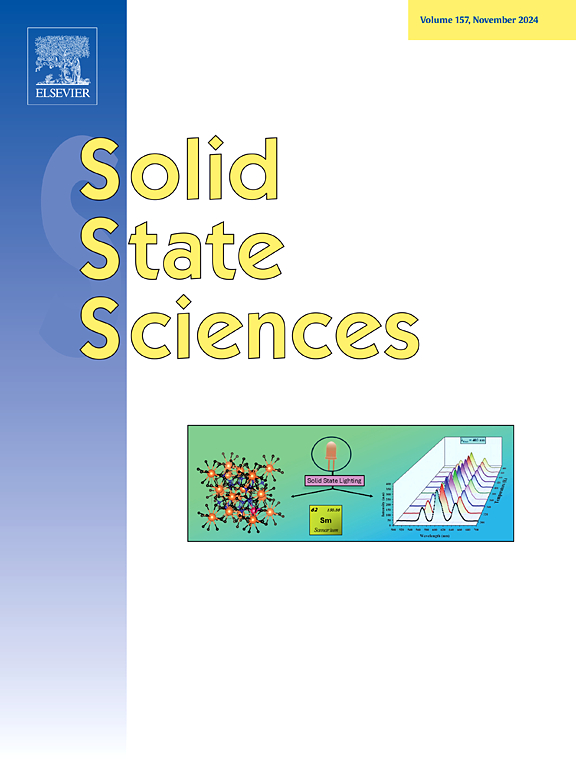Synthesis and characterization of P-doped g-C3N4/CuBi2O4 as a new heterogeneous nanocomposite for photocatalytic reduction of nitroaromatic compounds
IF 3.4
3区 化学
Q2 CHEMISTRY, INORGANIC & NUCLEAR
引用次数: 0
Abstract
In this research, the carbon substrate of graphitic carbon nitride was synthesized by polymerization route, and at the same time phosphorus element was successfully doped in its structure. Then CuBi2O4 nanoparticles were coupled and decorated on the layers of g-C3N4. Morphology, structural properties, and photocatalytic activity of the new heterogeneous nanocomposites (P-doped g-C3N4/CuBi2O4) were identified and evaluated using different and suitable spectroscopic and imaging methods. The synthesized nanocomposites were used as photocatalysts in the reduction of nitroaromatic compounds, which had high photocatalytic activity so that the conversion of nitrobenzene to aminobenzene (aniline) had a 100 % yield within 60 min. In the above reactions, hydrazine monohydrate was used as a hydrogen supplier. P-doped g-C3N4/CuBi2O4 photocatalyst had high recyclability and reusability. So after seven reuses, no measurable change was observed in the amount of nanocomposite and the rate of reaction efficiency.

p掺杂g-C3N4/CuBi2O4新型非均相纳米复合材料光催化还原硝基芳香族化合物的合成与表征
本研究通过聚合法制备了石墨氮化碳的碳底物,同时在其结构中成功掺杂了磷元素。然后将CuBi2O4纳米粒子偶联并修饰在g-C3N4层上。采用不同的光谱和成像方法对新型非均相纳米复合材料(p掺杂g-C3N4/CuBi2O4)的形貌、结构性能和光催化活性进行了鉴定和评价。合成的纳米复合材料作为光催化剂用于硝基芳香族化合物的还原,具有较高的光催化活性,使硝基苯在60 min内转化为氨基苯(苯胺)的收率达到100%。在上述反应中,以一水合肼为供氢源。p掺杂g-C3N4/CuBi2O4光催化剂具有较高的可回收性和可重复使用性。因此,经过7次重复使用,纳米复合材料的数量和反应效率没有明显的变化。
本文章由计算机程序翻译,如有差异,请以英文原文为准。
求助全文
约1分钟内获得全文
求助全文
来源期刊

Solid State Sciences
化学-无机化学与核化学
CiteScore
6.60
自引率
2.90%
发文量
214
审稿时长
27 days
期刊介绍:
Solid State Sciences is the journal for researchers from the broad solid state chemistry and physics community. It publishes key articles on all aspects of solid state synthesis, structure-property relationships, theory and functionalities, in relation with experiments.
Key topics for stand-alone papers and special issues:
-Novel ways of synthesis, inorganic functional materials, including porous and glassy materials, hybrid organic-inorganic compounds and nanomaterials
-Physical properties, emphasizing but not limited to the electrical, magnetical and optical features
-Materials related to information technology and energy and environmental sciences.
The journal publishes feature articles from experts in the field upon invitation.
Solid State Sciences - your gateway to energy-related materials.
 求助内容:
求助内容: 应助结果提醒方式:
应助结果提醒方式:


